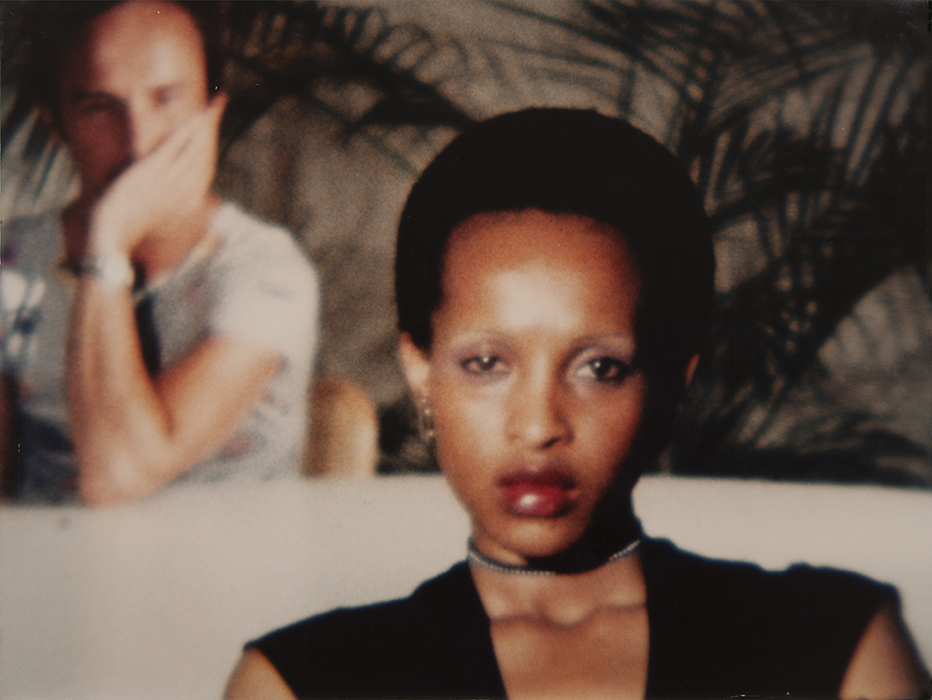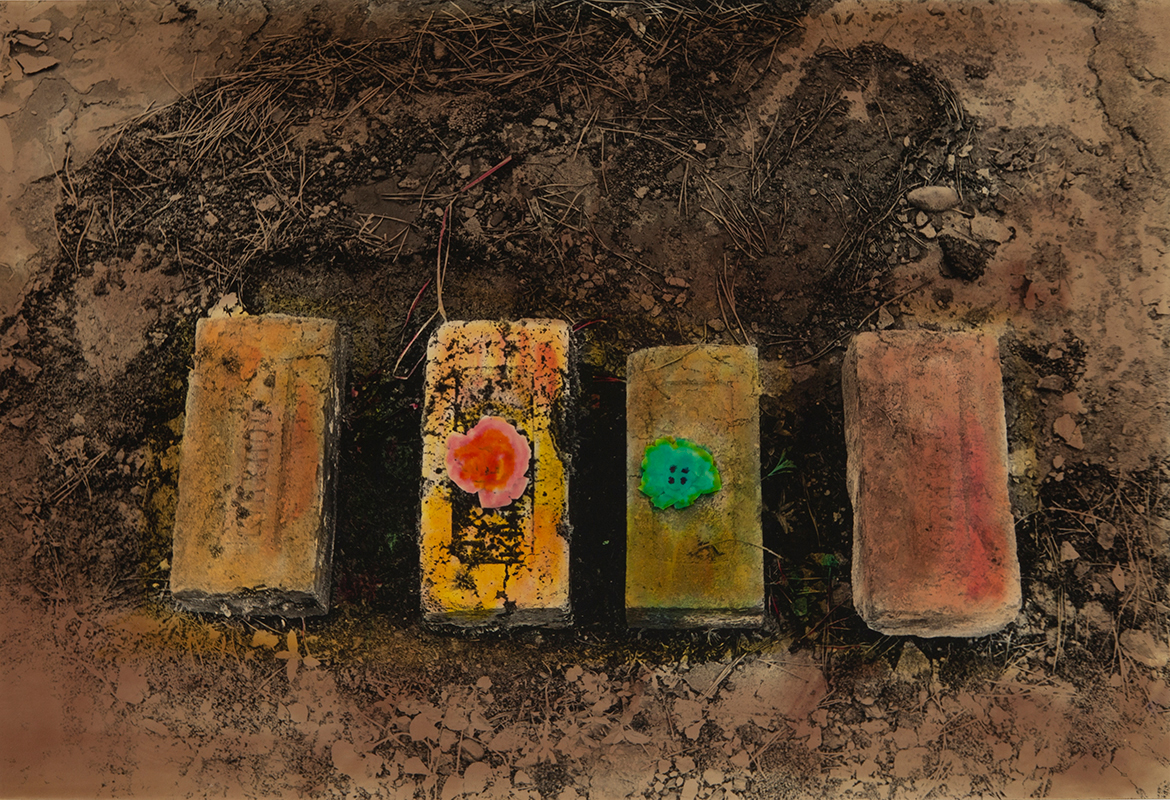

PRESS RELEASE
PARIS PARIS 2024
7–10 November / Grand Palais, Booth 48
The gallery will be exhibiting a variety of works in a presentation of photographs from the mid-20th century up to today. Featured images relate to Performance and Conceptual Art from the 1970s and ‘80s by artists who used photography to bring material presence or to document their ephemeral, time-based events and concepts. These include Anne Bean’s (b.1950) powerful, sometimes disturbing images of herself that emerge from the elemental live performances she has made for over four decades.
The Chinese-born, but later British-based artist, Li Yuan-Chia (1929-1994) is now regarded as China’s first Conceptual artist. He produced a series of lyrical photographs in the last years of his life – many were still life compositions with his sculptures, flowers and stones, and others were images of himself performing shaman-like for his own camera in his garden in Cumbria, with his face obscured or facing away from the viewer. After working for decades in painting, sculpture and installation, Li evolved this late immersion in photography in a highly personal, spiritual way. He hand-coloured and tinted many of his photographs, giving them an otherworldly, strangely timeless quality.
Ideas around personal identity and the ‘female gaze’ are examined in works by several artists: British performance artist Silvia Ziranek (b. 1952), known for witty and complex explorations of identity, feminism, food and clothing, expressed her feminist concerns about domesticity in works such as ICI VILLA MOI from 1989, where a series of photographs record her performing naked while holding up a series of small model houses. She is simultaneously the author, subject and director of her ironic images relating to women and the home.
London-based artist, Hannah O’Shea’s (b. 1939) image of a performer that she had body-painted with animal markings was used for the cover of feminist magazine Spare Rib in 1977 to illustrate their article, ‘Disturbing Images of Women’. O’Shea says her image is about female power and ‘is a reclamation of the female body… a revelation of the female gaze’. Hand-coloured photographs from the 1980s by Irish-born artist, Roberta M. Graham (b. 1954) explored the violent relationship between the human body and the world.
The ‘male gaze’ is explored in works by the British Conceptual artist, James Collins (1939-2021): in his works concerning dialogue-as-portrait, the women who appear in his photographs vary, while all the male images are self-portraits of Collins. As a review in Art Forum pointed out in 1977, in his ‘watching’ series, Collins created double portraits of male-female encounters that convey a sense of isolation, intimacy, and tension with an erotic charge.
During the late 1970s, David Thorp (b.1947) worked on a series of performative images concerned with boundaries and constraints, both physical and psychological. They were to do with limitations of movement (being trapped), concealment, voyeurism, and the avoidance of, or response to, the gaze.
Italian artist/photographer Elisabetta Catamo (b.1948) became known in the 1970s and ’80s for her intense, surrealist colour tableaux of juxtaposed objects and body elements. Her images – produced in a pre-digital era – featured in photographic magazines of the era such as ZOOM and influenced contemporaneous advertising photography. Surrealism is also evidenced in the collages of found photographs by Victoria Halford (b. 1966) from the early 2000s.
Jenny Matthews (b. 1948) is a documentary photographer and filmmaker working on issues of dispossession and human rights with an emphasis on the lives of women and girls: her book, Women and War was published in 2003. In her Facial De-Recognition series, Matthews revisited some of her photographs of Afghan women after the Taliban took control of Afghanistan again. She printed on linen and embroidered them in response to Afghan women having to hide their identities as it is no longer safe for women to be photographed. She says that ‘embroidery seems an appropriate activity as it references the clandestine activity of women in Herat during the previous Taliban rule.’
Other works include Clay Perry’s (b. 1940) iconic portrait of Yoko Ono holding a glass hammer. Perry is known for documenting London’s avant-garde art scene in the 1960s. London also features in Rose Boyt’s (b. 1958) images of her ‘Punk’ friends performing for her camera outside Vivienne Westwood and Malcolm Maclaren’s shop, Seditionaries on the Kings Road in the 1970s.
